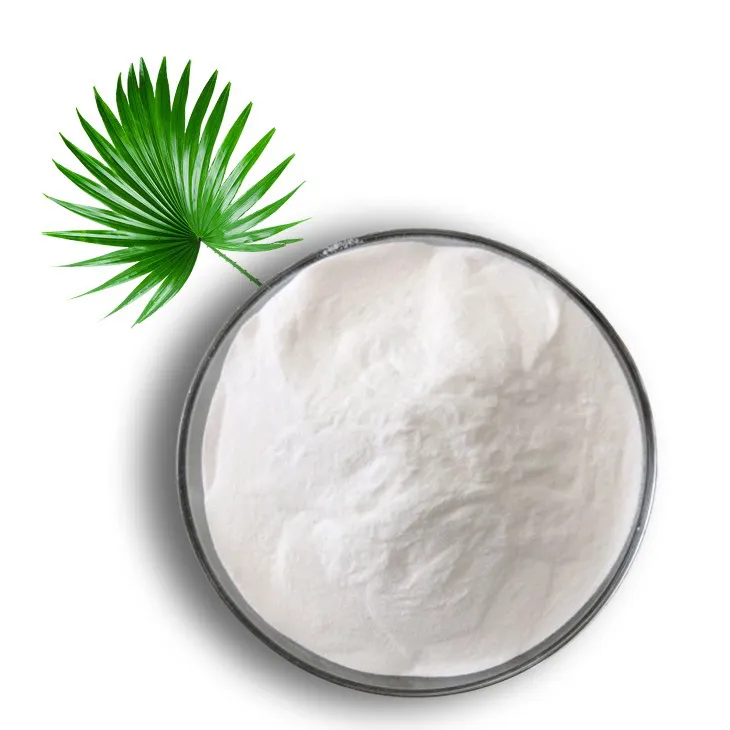- 0086-571-85302990
- sales@greenskybio.com
Nature's Palette: Types of Natural Dyes Derived from Plants
2024-08-24
Introduction
Nature has bestowed upon us a remarkable palette of colors through the use of natural dyes derived from plants. These dyes have a rich history and have been used for centuries in various cultures around the world. In this article, we will explore the different types of natural dyes obtained from plants and their applications in textiles, art, and other creative fields. We will also discuss the environmental benefits of using natural dyes.
Types of Natural Dyes from Plants
Indigo
Indigo is one of the most well-known natural dyes. It is derived from the leaves of the indigo plant, which is native to tropical regions. The indigo dye is extracted through a fermentation process that converts the indigo precursor into the active dye molecule. Indigo produces a deep blue color that is highly resistant to fading and is widely used in textile dyeing.
- Historical Significance: Indigo dyeing has a long history, with evidence of its use dating back thousands of years. It was particularly important in ancient civilizations such as Egypt and India.
- Textile Applications: Indigo is commonly used to dye cotton, linen, and silk fabrics. It creates a vibrant blue color that is often associated with traditional textiles.
- Artistic Uses: In addition to textiles, indigo dye is also used in artistic applications such as painting and printmaking. It can be used to create unique and textured effects.
Woad
Woad is another ancient plant-based dye that was widely used in Europe before the introduction of indigo. It is derived from the leaves of the Isatis tinctoria plant. The woad dye produces a greenish-blue color that is lighter in tone than indigo. Woad dyeing was an important industry in medieval Europe and was used to dye wool and linen.
- Historical Use: Woad dyeing was a major industry in parts of Europe during the Middle Ages. It was used to color clothing and was also associated with certain social statuses.
- Textile Dyeing: Woad is suitable for dyeing wool and linen fabrics. It can create a soft and delicate blue color that is often used in traditional European textiles.
- Medicinal Properties: In addition to its dyeing properties, woad has also been used for medicinal purposes. It was believed to have anti-inflammatory and analgesic effects.
Madder
Madder is a plant-based dye that produces a range of red and pink colors. It is derived from the roots of the madder plant, which is native to the Mediterranean region. The madder dye is extracted through a maceration process that involves soaking the roots in water or an alcohol solution. Madder dye is highly stable and can be used to create deep and vibrant red colors.
- Historical Use: Madder dyeing has a long history and was used in ancient civilizations such as the Egyptians and the Greeks. It was also an important dye in medieval Europe.
- Textile Dyeing: Madder is commonly used to dye wool and silk fabrics. It can create a wide range of red and pink colors, from pale pink to deep red.
- Artistic Applications: In addition to textiles, madder dye is also used in artistic applications such as painting and dyeing of natural fibers. It can add a warm and rich color to artworks.
Tumeric
Tumeric is a yellow-orange dye that is derived from the rhizomes of the Curcuma longa plant. It has been used for centuries in traditional medicine and cooking. Tumeric dye is water-soluble and produces a bright yellow color that is often used in dyeing of natural fibers such as cotton and silk.
- Historical and Cultural Significance: Tumeric has a long history of use in Indian and Ayurvedic medicine. It is also an important ingredient in many traditional dishes.
- Textile Dyeing: Tumeric dye is commonly used to create yellow and orange colors in textiles. It can be used alone or combined with other dyes to create more complex color palettes.
- Other Applications: In addition to textiles, tumeric dye is also used in cosmetics and body art. It is known for its antibacterial and anti-inflammatory properties.
Henna
Henna is a plant-based dye that is commonly used for temporary body art and hair dyeing. It is derived from the leaves of the Lawsonia inermis plant. Henna produces a reddish-brown color that is long-lasting and fades gradually over time. Henna has been used for centuries in various cultures for decorative purposes.
- Historical and Cultural Use: Henna has a rich cultural history and is often used in weddings and other special occasions in many parts of the world. It is also used in some traditional African and Middle Eastern cultures.
- Hair Dyeing: Henna is a popular choice for natural hair dyeing. It can add a warm and rich color to the hair without the use of harsh chemicals.
- Body Art: Henna is commonly used to create temporary tattoos and body art. The dye is applied to the skin and leaves a beautiful design that lasts for several weeks.
Environmental Benefits of Using Natural Dyes
Using natural dyes derived from plants offers several environmental benefits. Compared to synthetic dyes, natural dyes are biodegradable and have a lower impact on the environment. They do not release harmful chemicals into the soil or water during the dyeing process, reducing the potential for pollution.
- Sustainable Sourcing: Many plant-based dyes are sourced from local and sustainable sources. This helps to support local economies and reduces the carbon footprint associated with long-distance transportation.
- Reduced Chemical Use: Natural dyes do not require the use of harsh chemicals and synthetic additives that are often used in synthetic dye production. This reduces the potential for health hazards and environmental pollution.
- Biodegradability: Natural dyes are biodegradable, meaning they can be broken down by natural processes over time. This reduces the accumulation of synthetic dyes in the environment and helps to maintain a healthy ecosystem.
The Dyeing Process
Extraction of Dyes
The first step in the dyeing process is the extraction of dyes from plant materials. This can be done through various methods such as maceration, fermentation, and solvent extraction. The specific method used depends on the type of plant and the desired dye color.
- Maceration: In maceration, the plant materials are soaked in water or an alcohol solution to extract the dyes. This method is commonly used for dyes such as madder and tumeric.
- Fermentation: Fermentation is used to extract indigo dye from the indigo plant. The leaves are chopped and placed in a vat, where they are allowed to ferment with the addition of certain bacteria. This process converts the indigo precursor into the active dye molecule.
- Solvent Extraction: Some plant-based dyes can be extracted using organic solvents such as ethanol or acetone. This method is often used for dyes that are less soluble in water.
Dyeing Techniques
Once the dyes are extracted, they can be used in various dyeing techniques to achieve different color effects. Some common dyeing techniques include hand dyeing, dip dyeing, and resist dyeing.
- Hand Dyeing: Hand dyeing is a traditional method of dyeing where the fabric is soaked in the dye solution and manipulated by hand to achieve desired color patterns. This technique allows for more control and creativity in the dyeing process.
- Dip Dyeing: Dip dyeing involves dipping a fabric into a dye solution and allowing only a portion of the fabric to be colored. This technique is often used to create gradient or ombre effects.
- Resist Dyeing: Resist dyeing techniques involve using resist materials such as wax or tie-dyeing to create patterns or designs on the fabric before dyeing. This allows for the creation of intricate and unique color patterns.
Conclusion
Nature's palette of natural dyes derived from plants offers a wide range of colors and applications. These dyes have a rich history and cultural significance, and they continue to be used in modern times for textiles, art, and other creative endeavors. By using natural dyes, we can not only enjoy the beauty of natural colors but also contribute to a more sustainable and environmentally friendly future.
FAQ:
What is the main focus of Nature's Palette"?
The main focus is on presenting an in-depth look at the types of natural dyes obtained from plants and their uses throughout history.
How does the article examine the color spectrum of natural dyes?
The article examines the color spectrum by looking at different plant species and how their dyes offer a rich range of colors.
What are some of the creative endeavors where natural dyes have been used?
Natural dyes have been used in textiles and art for creative endeavors.
What are the environmental benefits of using natural dyes?
Using natural dyes has environmental benefits, but specific details are not provided in the given text.
Which plant species are mentioned in relation to natural dyes?
No specific plant species are mentioned in the given text.
Related literature
- "Natural Dyes in Textile History"
- "The Use of Plant-Derived Dyes in Art"
- "Environmental Impact of Natural Dyes"
- ▶ Hesperidin
- ▶ Citrus Bioflavonoids
- ▶ Plant Extract
- ▶ lycopene
- ▶ Diosmin
- ▶ Grape seed extract
- ▶ Sea buckthorn Juice Powder
- ▶ Fruit Juice Powder
- ▶ Hops Extract
- ▶ Artichoke Extract
- ▶ Mushroom extract
- ▶ Astaxanthin
- ▶ Green Tea Extract
- ▶ Curcumin
- ▶ Horse Chestnut Extract
- ▶ Other Product
- ▶ Boswellia Serrata Extract
- ▶ Resveratrol
- ▶ Marigold Extract
- ▶ Grape Leaf Extract
- ▶ New Product
- ▶ Aminolevulinic acid
- ▶ Cranberry Extract
- ▶ Red Yeast Rice
- ▶ Red Wine Extract
-
Genistein
2024-08-24
-
Black Rice Extract
2024-08-24
-
Nettle leaf extract
2024-08-24
-
Purple Sweet Potato Extract
2024-08-24
-
Shikonin
2024-08-24
-
Medicinal Marshmallow Extract
2024-08-24
-
Selenium yeast
2024-08-24
-
Shikone Extract
2024-08-24
-
Saw Palmetto Extract
2024-08-24
-
Alisma Extract
2024-08-24





















